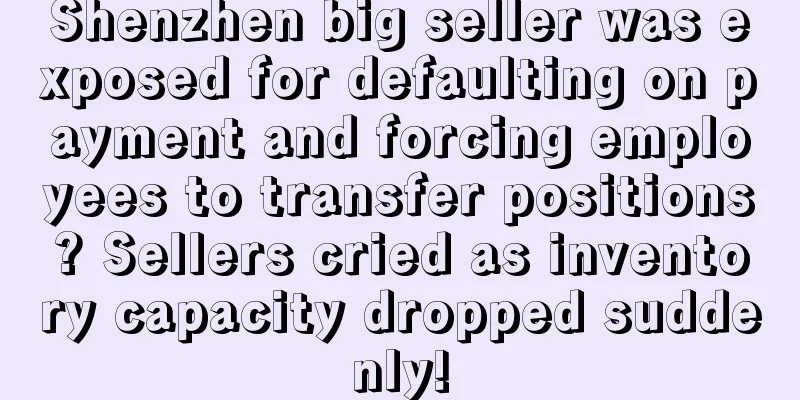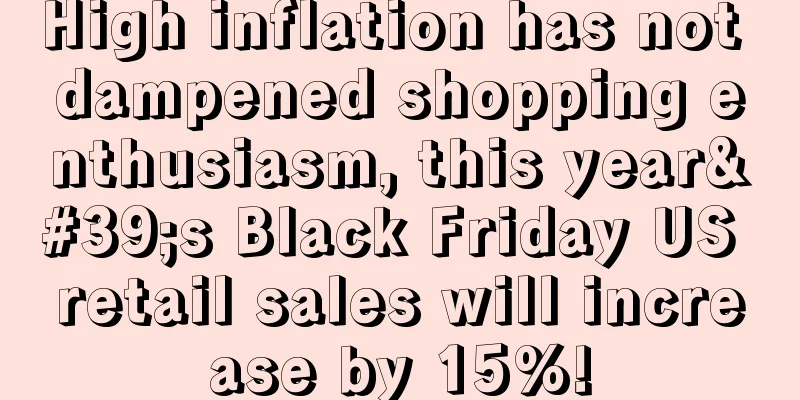Amazon starts charging store balance for negative balance overnight

|
As the Black Friday and Cyber Monday promotions approach, many sellers are looking forward to an increase in traffic and a surge in orders. However, the arrival of peak season storage fees has broken the original tranquility, and a group of sellers are beginning to be "heartbroken". October to December every year is the traditional peak season for cross-border e-commerce, and the Amazon platform will charge storage fees three times higher than usual.
"The sky is falling. Amazon's peak season storage fees are so painful that the balance has turned negative." "The volume of orders during the off-season, the charges during the peak season, plus the delayed settlement, Amazon is suffering this month." "When I checked the store balance today, I found it was so much less all of a sudden. It turned out that the three times storage fee had started to be deducted." "I immediately checked the storage fees of other stores and found that they were charged a total of $20,000. I was immediately devastated." After the storage fees were deducted this time, many store balances were directly cleared to zero or turned negative. Sellers who are "as fierce as a tiger" are bound to be worried because they still owe money to Amazon while selling goods. It is understood that stores with negative balances are mostly new stores. Generally speaking, new stores are still in the "investment" stage in the first few months and cannot bring much profit to sellers. Some can only barely maintain their costs. However, Amazon charges three times the storage fee. It can even be said in other words: 1 month's fee is charged for 3 months. It is inevitable that the store balance will "go negative overnight." After deducting the storage fee, in addition to new stores, the profits of many old stores are not optimistic. This year, many sellers said that the peak season was not prosperous, and the number of orders dropped sharply compared with previous years. After the platform deducted the money, the profits of the sellers' old stores were naturally affected again. A senior seller said bluntly: Due to the previous sluggish orders, many sellers already had a large backlog of inventory, and the peak season storage fees that Amazon began to charge this month were undoubtedly a critical blow to those sellers who neglected to manage their products. Whenever the peak season comes at the end of the year, the storage level is significantly higher than usual. If the seller has a high inventory turnover rate, the problem is not too big; but if there are many unsaleable products, the seller will face huge storage cost pressure. It is also important to note that in addition to the basic monthly storage fee and the expensive peak season storage fee, there is another expense that should not be underestimated - goods stored for more than 181 days will also be charged an overage inventory surcharge (formerly known as long-term storage fee) . The overage inventory surcharge will not only increase gradually with the number of overage days, but there will also be a minimum charge when the inventory age exceeds 365 days. Exclusions for certain products: products listed under the categories of clothing, shoes, bags, jewelry and watches are not included; long-term storage fees will be charged for these products if they are 271 days or more in stock. Since Amazon's peak season storage fee cycle has not yet ended, it is recommended that sellers deal with redundant inventory in a timely manner to avoid large storage fee expenditures. You can try the "four-step" combination punch according to the recycling value and your own recycling speed requirements: 1. Expand site: expand sales to more sites at the original price; 2. Promote sales: reduce prices and clear out inventory to solve inventory backlogs; 3. Reserve capacity: to accommodate inventory to be processed; 4. Clear redundancy: remove inventory and recover remaining value. Amazon's additional peak season fees (recently including $50 Prime exclusive discount promotion fees, peak season delivery fees, peak season storage fees, and UPS's overweight fees for goods on China-US routes) do have an adverse impact on sellers' profits. Sellers need to make budgets and plans in advance to cope with the challenges brought by these cost increases. At the same time, sellers can also consider reducing cost pressure by optimizing inventory management, increasing product prices, and finding more economical logistics channels. |
<<: Is Amazon secretly raising prices again? A large number of sellers' orders have dropped sharply!
>>: Amazon is serious! These backend functions have been completely upgraded!
Recommend
What is shanghai-customs? shanghai-customs review
shanghai-customs offers a unique combination of in...
This weekend is not peaceful! A large number of stores have been closed
Another batch of stores died due to brand associat...
What is China Trade News Network (China Trade News)? China Trade News Network (China Trade News) Review
China Trade News Network is a central authoritativ...
A new round of trade conflict! Trump plans to impose 25% tariffs on Canada and Mexico starting in February
It is learned that recently, US President Donald T...
12,000 reviews lost in 5 days! This Black Friday, Amazon...
Sellers who have been on Amazon for a long time k...
Online prices drop to 41-month low! Americans love to shop online for bargains!
It is learned that Adobe recently released the lat...
Terrible! A batch of accounts will be blocked due to business scope? Sellers spend over 900 million yuan on advertising in one day!
Cross-border sellers have had a tough time recentl...
Urgent notice: Check yourself! GBC Law Firm has started "fishing enforcement" again, and many sellers have been caught
GBC Law Firm, which is notorious in the entire cro...
Home Depot announces 2023 financial results with net profit of $15.1 billion
It is learned that Home Depot reported that its on...
Breaking news! The United States is attacking this type of product, and Temu is the first to bear the brunt!
In 2023, China's four overseas dragons activel...
What is Viraltag? Viraltag Review
Viraltag is a visual social media marketing tool t...
Good news! Good news! Amazon PD is in the countdown!
I wonder if you still log in to the backend every ...
What is perfe-hair? perfe-hair review
Perfe-hair is a brand founded in May 2016. It prov...
Amazon’s pricing strategy for low-priced products that will never lose money
text The core of low-priced products: price sensi...
The inside story of Amazon’s low-price mall is fully exposed!
text Last time we mentioned that Amazon’s low-pric...









